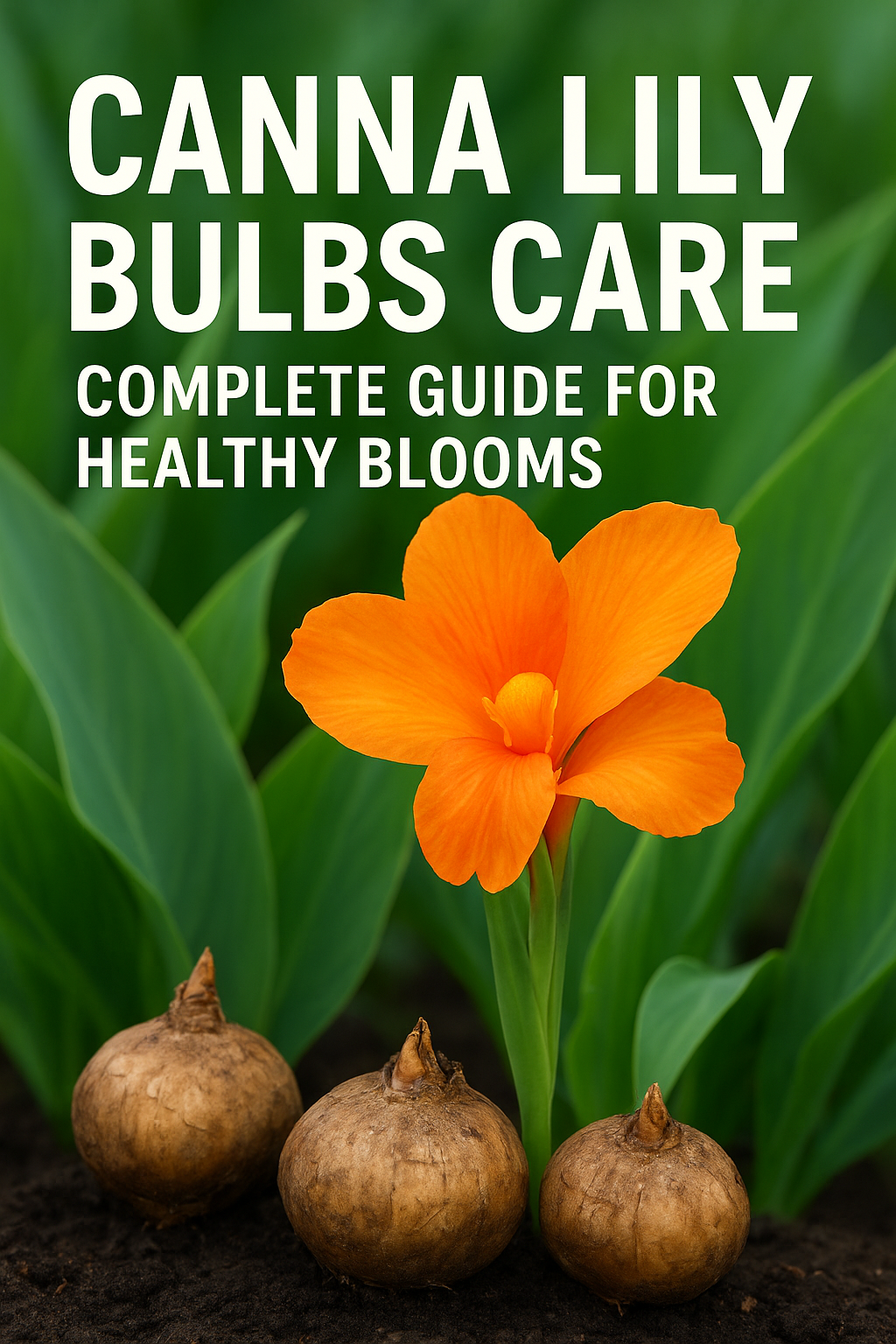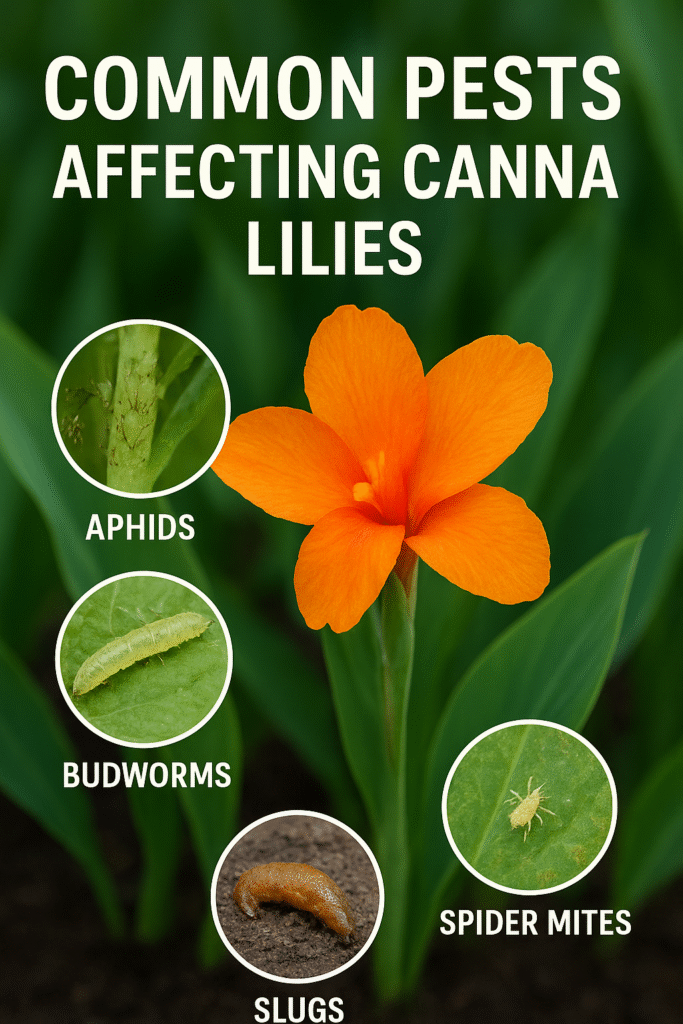Business
Canna Lily Bulbs Care: Complete Guide for Healthy Blooms

Canna lilies are some of the most striking plants you can grow in a garden or container. Known for their bold leaves and vibrant flowers, they add a tropical flair to almost any outdoor space. However, to enjoy their beauty year after year, it is essential to understand how to properly care for canna lily bulbs. These underground structures are the key to the plant’s survival, growth, and flowering cycle. By mastering canna lily bulbs care, gardeners can ensure a display of color that thrives throughout the growing season.
Understanding Canna Lily Bulbs
Canna lilies are not true lilies, but rather members of the plant family Cannaceae. What most gardeners call bulbs are technically rhizomes—thick underground stems that store nutrients and energy. These rhizomes enable the plant to regenerate each year, producing lush foliage and large flowers in shades of red, yellow, orange, and pink. Recognizing this difference is important because rhizomes behave differently than true bulbs such as tulips or daffodils. Canna rhizomes spread outward over time, creating more plants and requiring periodic division to stay healthy.
Choosing Quality Bulbs for Planting
Good canna lily bulbs care begins with selecting healthy rhizomes. When purchasing or preparing them for planting, look for firm, plump pieces with at least two to three “eyes” or growth buds. Avoid shriveled, moldy, or overly soft rhizomes, as these often fail to grow. Size also matters—larger rhizomes typically produce stronger plants and more flowers in the first year. Choosing disease-free bulbs ensures that the plant starts with the best chance of success.
Best Time to Plant Canna Lily Bulbs
Timing plays a crucial role in canna lily bulbs care. Canna rhizomes are frost-tender and cannot tolerate cold soil. Planting should only occur once the risk of frost has passed and soil temperatures have warmed to around 60°F (15°C). In cooler regions, this usually falls in late spring, while in warmer climates, planting can occur earlier. Some gardeners start bulbs indoors in pots about four to six weeks before the last frost, giving them a head start for quicker outdoor growth once the weather stabilizes.
Preparing Soil for Canna Lilies
Canna lilies thrive in rich, well-draining soil that retains enough moisture to support their rapid growth. Before planting, loosen the soil to a depth of at least 12 inches and amend it with compost or organic matter. This provides the nutrients necessary for vigorous foliage and blooms. A slightly acidic to neutral pH, between 6.0 and 7.0, is ideal. Good soil preparation ensures that the rhizomes settle into an environment where they can establish roots quickly and grow without stress.
Planting Depth and Spacing
Correct planting depth and spacing are essential parts of canna lily bulbs care. Place rhizomes horizontally with the eyes facing upward, about four to six inches deep in the soil. Space each bulb between 12 and 18 inches apart to give the plants room to expand. Since canna lilies can grow quite tall, crowding them can lead to poor air circulation, which increases the risk of disease. Proper spacing also helps showcase the plants’ dramatic leaves and flowers.
Watering Needs for Canna Lilies
Canna lilies are moisture-loving plants that require consistent watering to thrive. After planting, water thoroughly to settle the soil around the rhizomes. During the growing season, maintain evenly moist soil without allowing it to become waterlogged. Deep watering once or twice a week usually suffices, but in hot climates or sandy soils, more frequent watering may be necessary. Mulching around the plants helps retain soil moisture and reduces the need for constant watering.
Fertilizing for Healthy Growth
Because canna lilies grow rapidly and produce large leaves and flowers, they are heavy feeders. Applying a balanced fertilizer supports strong growth and prolonged blooming. A formula with equal parts nitrogen, phosphorus, and potassium works well, although slightly higher phosphorus can enhance flowering. Fertilize every four to six weeks during the active growing season. Over-fertilizing with nitrogen can lead to excessive leaf growth at the expense of blooms, so balance is key.
Sunlight Requirements for Blooms
Canna lilies thrive best in full sun, which means at least six to eight hours of direct light daily. Adequate sunlight encourages the rhizomes to generate energy for flowering, resulting in larger and more abundant blooms. While they can tolerate partial shade, the plants may become leggy and produce fewer flowers in less light. Positioning them in a sunny garden bed or patio container ensures they reach their full potential.
Temperature and Climate Considerations
Canna lilies are native to tropical and subtropical regions, which explains their sensitivity to cold. Ideal temperatures for growth range from 70°F to 90°F (21°C to 32°C). In cooler climates, gardeners must treat them as tender perennials, lifting and storing the bulbs over winter. In warmer zones where frost is rare, canna lilies can remain in the ground year-round, coming back each spring with renewed vigor. Understanding local climate is an important part of planning their care.
Mulching for Protection and Moisture
Applying mulch around canna lilies serves multiple purposes. A two- to three-inch layer of organic mulch such as shredded bark or straw helps retain soil moisture, keeps roots cool, and suppresses weed growth. In cooler climates, mulching also provides a layer of insulation that protects rhizomes from sudden temperature fluctuations. However, avoid piling mulch directly on top of the rhizomes, as this can trap moisture and lead to rot.
Pruning and Deadheading Spent Flowers
To encourage continuous flowering, it is important to remove faded blooms promptly. Deadheading prevents the plant from directing energy into seed production, redirecting it toward new flower spikes. Additionally, cutting back damaged or yellowing leaves improves the plant’s overall appearance. At the end of the season, after frost has killed the foliage, cut stems back to a few inches above the ground before lifting and storing bulbs. Proper pruning is a small but vital step in long-term care.
Common Pests Affecting Canna Lilies
Like all plants, canna lilies are susceptible to pests. Aphids, spider mites, and Japanese beetles are common problems. Aphids cluster on tender shoots, sucking sap and causing distorted growth. Spider mites thrive in hot, dry weather, leaving fine webs on leaves. Japanese beetles chew through foliage and flowers, leaving unsightly damage. Regular inspection and early intervention help keep these pests under control. Washing leaves with water, applying insecticidal soap, or introducing beneficial insects like ladybugs can all help manage infestations.
Diseases and How to Prevent Them
Canna lilies can suffer from fungal and bacterial diseases if conditions are unfavorable. Canna rust, a fungal infection, appears as orange pustules on leaves and spreads quickly in humid environments. Bacterial blight causes streaking and wilting, often leading to plant collapse. To prevent disease, maintain good air circulation, avoid overhead watering, and remove affected leaves promptly. Starting with healthy bulbs and avoiding overcrowding greatly reduces the risk of infection.
Winterizing Canna Lily Bulbs
In regions with freezing winters, canna lily bulbs require special care to survive until the next growing season. After the first frost blackens the foliage, carefully dig up the rhizomes. Shake off excess soil and allow them to dry for a few days in a warm, airy space. Once dry, store them in peat moss, sawdust, or vermiculite inside a cool, dark location where temperatures remain between 40°F and 50°F (4°C to 10°C). Check periodically for rot or shriveling, discarding any unhealthy rhizomes.
Overwintering in Warmer Regions
In areas where frost is rare, canna lilies may be left in the ground year-round. However, gardeners should still take precautions by applying a thick mulch layer in late fall. This protects rhizomes from any unexpected cold snaps. Cutting back dead foliage in winter keeps the garden tidy and prevents pests from overwintering in plant debris. With proper overwintering care, canna lilies in warmer regions return stronger each season.
Dividing and Propagating Canna Lilies
Over time, canna lily bulbs multiply, forming crowded clumps that require division every two to three years. Division keeps plants healthy and provides an opportunity to propagate new plants. To divide, dig up the rhizomes in spring or after lifting them in fall. Cut them into sections, ensuring each piece has at least one growth eye. Replant divisions in fresh soil, following the same planting guidelines. Propagation through division is one of the simplest ways to expand your canna collection.
Growing Canna Lilies in Containers
Canna lilies adapt well to containers, making them suitable for patios, balconies, and small gardens. When growing in pots, select a container at least 12 inches deep and wide, with adequate drainage holes. Use rich potting soil and water frequently, as containers dry out more quickly than garden beds. Fertilize regularly to replace nutrients washed away with watering. Container-grown cannas may need extra protection in winter, either by moving pots indoors or removing bulbs for storage.
Landscaping with Canna Lilies

Beyond basic care, canna lilies are versatile landscape plants. Their bold foliage creates dramatic focal points, while their flowers attract hummingbirds and pollinators. They can be used in mixed borders, as background plants, or even along ponds and water features since they tolerate moist soil. Combining them with lower-growing plants adds depth and variety to the garden. Their tropical aesthetic brings a lush, exotic feel to any landscape design.
Mistakes to Avoid in Canna Lily Bulbs Care
Gardeners sometimes make common errors that affect the health of their canna lilies. Planting rhizomes too early in cold soil often leads to rot. Overwatering or poor drainage can also damage bulbs. Neglecting to fertilize reduces flowering, while excessive nitrogen leads to more leaves than blooms. Forgetting to dig up bulbs before frost in colder regions is another mistake that results in loss of plants. Avoiding these pitfalls ensures stronger, healthier canna lilies year after year.
Long-Term Maintenance and Enjoyment
Canna lily bulbs care does not end with one season—it is an ongoing process that rewards patience and attention. By properly planting, watering, feeding, and protecting bulbs, gardeners can enjoy these tropical beauties for many years. Each season brings larger clumps, more blooms, and opportunities to share divisions with friends and family. With care, canna lilies become a permanent highlight in gardens, offering endless enjoyment and color.
Conclusion
Canna lilies may look exotic and demanding, but with the right approach to bulb care, they are surprisingly resilient and rewarding plants. From selecting healthy rhizomes and planting them at the right time, to watering, fertilizing, and winterizing them, each step plays a vital role in their success. By mastering canna lily bulbs care, gardeners ensure that these vibrant flowers return each year, brighter and more stunning than before. With proper attention, canna lilies can transform any space into a tropical paradise.
-

 Tech1 year ago
Tech1 year agoHow to Use a Temporary Number for WhatsApp
-

 Business2 years ago
Business2 years agoSepatuindonesia.com | Best Online Store in Indonesia
-

 Social Media1 year ago
Social Media1 year agoThe Best Methods to Download TikTok Videos Using SnapTik
-

 Technology1 year ago
Technology1 year agoTop High Paying Affiliate Programs
-

 Tech10 months ago
Tech10 months agoUnderstanding thejavasea.me Leaks Aio-TLP: A Comprehensive Guide
-

 FOOD12 months ago
FOOD12 months agoHow to Identify Pure Desi Ghee? Ultimate Guidelines for Purchasing Authentic Ghee Online
-

 Instagram3 years ago
Instagram3 years agoFree Instagram Auto Follower Without Login
-

 Instagram3 years ago
Instagram3 years agoFree Instagram Follower Without Login



















